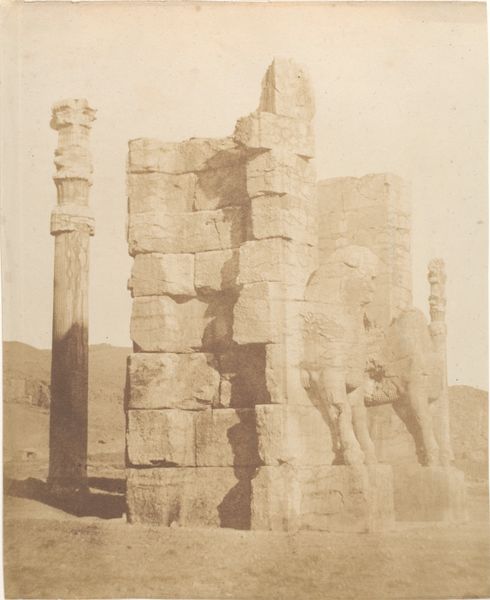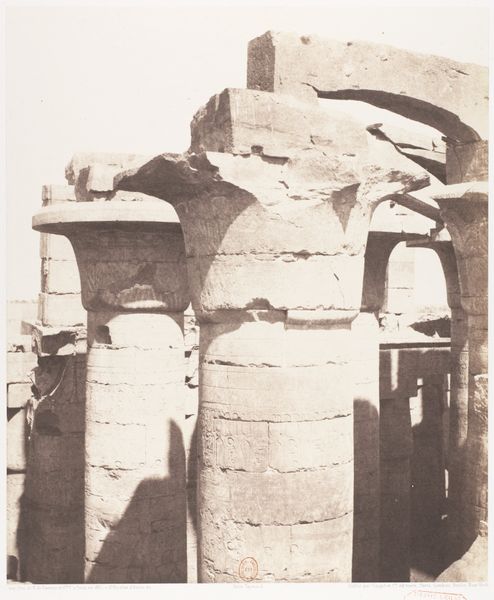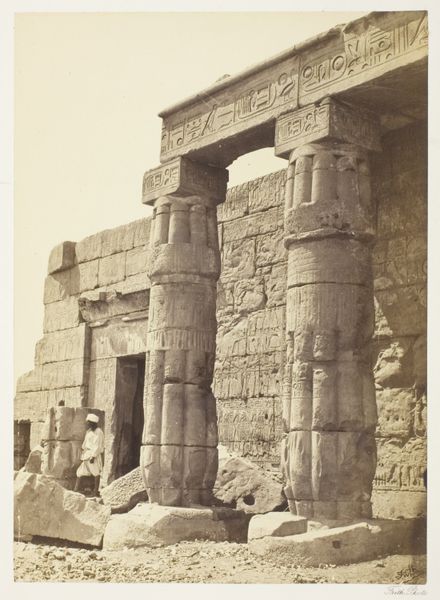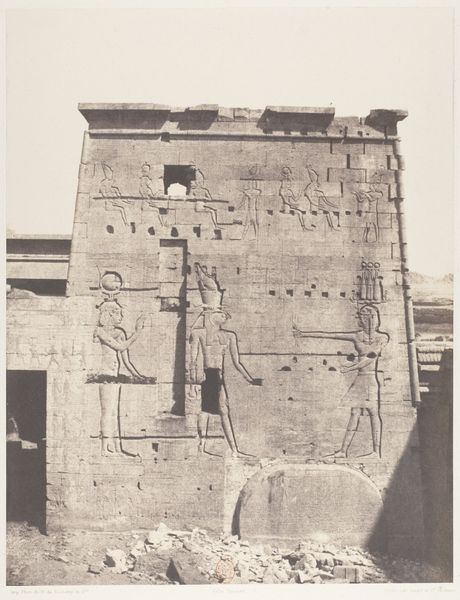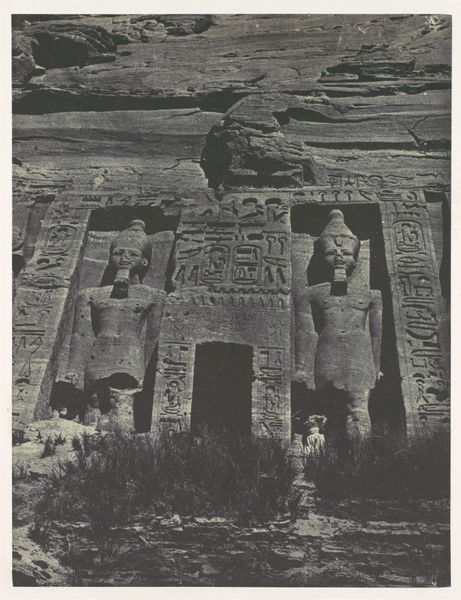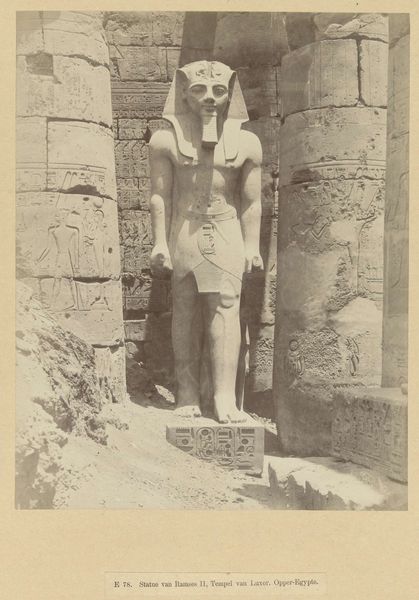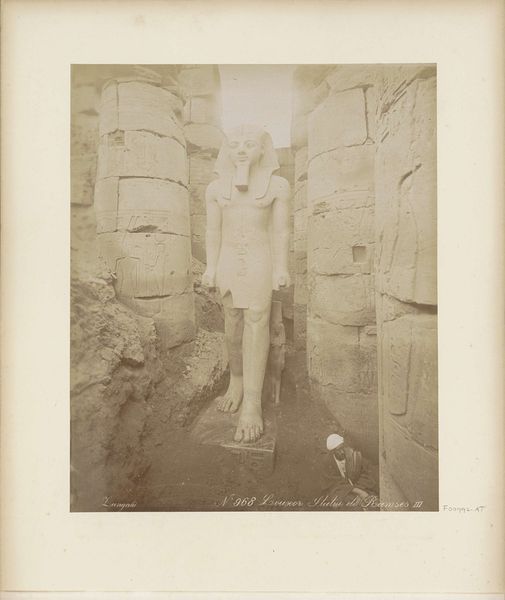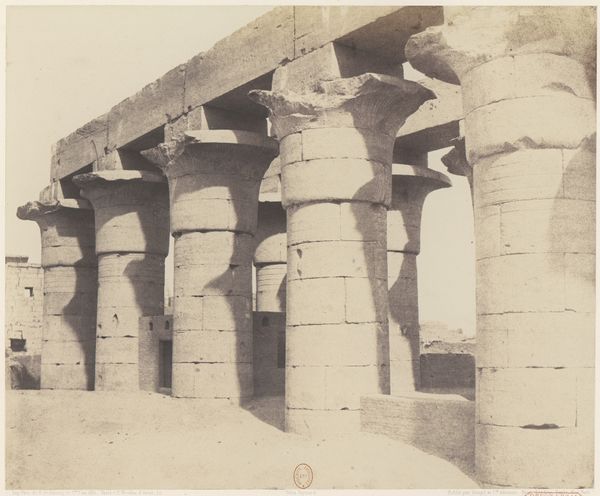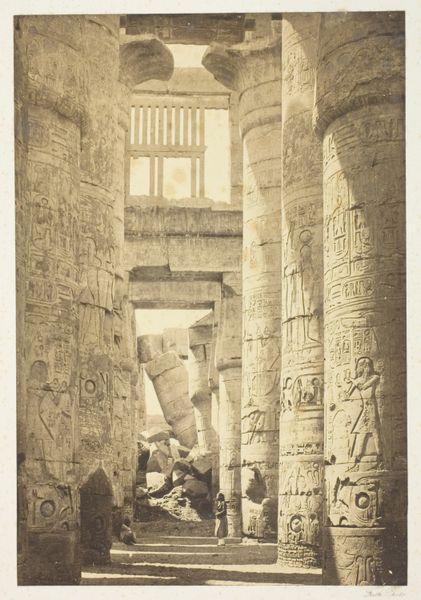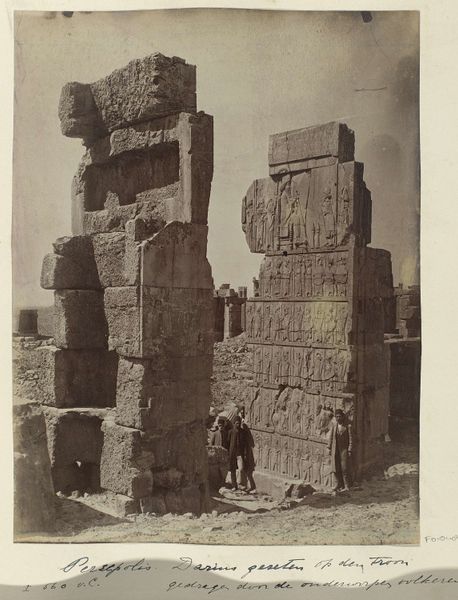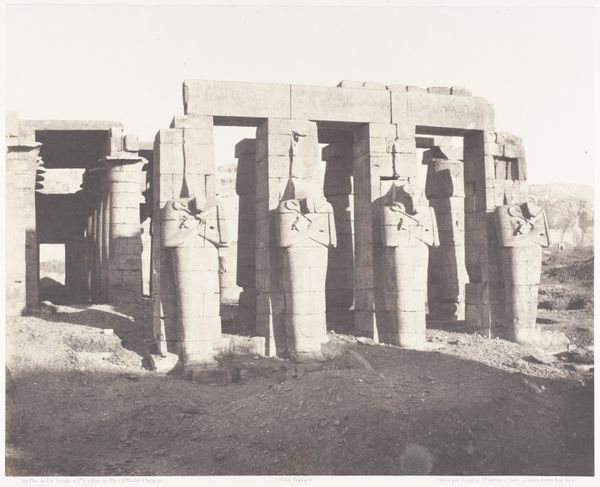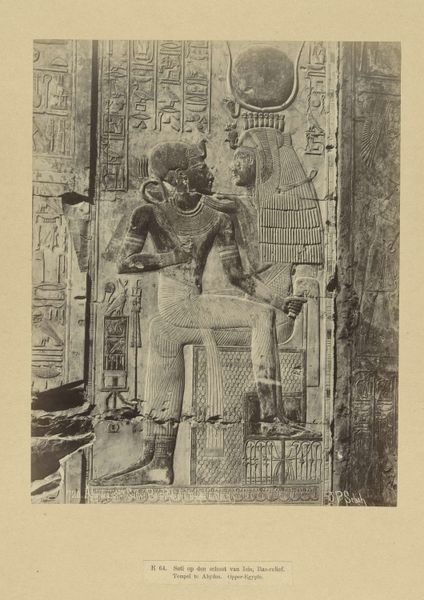
print, photography, architecture
# print
#
landscape
#
ancient-egyptian-art
#
photography
#
geometric
#
ancient-mediterranean
#
architecture
Dimensions: 22.5 × 16 cm (image/paper); 31.5 × 43.4 cm (mount)
Copyright: Public Domain
Curator: This is Francis Frith’s photograph, “Osiride Pillars at Medinet-Haboo,” taken around 1857, now residing here at the Art Institute of Chicago. Editor: Wow, there's an overwhelming sense of permanence, yet at the same time...fragility. Like witnessing the slow crumbling of time itself. That sepia tone really heightens the feeling, doesn't it? Curator: Frith's photographs, particularly those from his travels to the Middle East, were crucial in shaping Western perceptions of these regions. He didn't just document architecture; he essentially codified how many viewed these ancient cultures. Editor: Absolutely. And the shadows! They almost give the stone a life of its own, playing with the light. Do you get a sense of the relentless sun beating down? Or maybe the silence inside these ruins? I love the hint of human presence, carved right there at the base, looking smaller than ever. Curator: The photographic expeditions Frith undertook were fraught with technical difficulties. He faced immense heat and logistical challenges in developing his images in situ. That's relevant because the tones, composition—even the print quality—were impacted. Those things became deeply tied to the perceived truth and exoticism. Editor: Thinking about it, photography at that time was about so much more than capturing light; it was about staking a claim on history itself. Do you think these romantic images fed into imperial fantasies and made them easier to justify? Curator: Precisely. The sublime scale emphasized the power, antiquity and potential influence of these sites. Images like this were definitely harnessed in the service of empire, creating a sense of historical connection for a colonial audience. Editor: It’s amazing to see a photographer like Frith using the very latest technology of the 1850's to look backward into time! But looking at his choices...it really is impossible to separate "objective documentation" from the politics of image-making, huh? Curator: Indeed. Ultimately, "Osiride Pillars at Medinet-Haboo" becomes as much about 19th-century imperial ideology as it is about ancient Egyptian architecture. Editor: Yeah, while gazing at history through Frith's lens...it also offers this powerful glimpse of our own past intentions. Thank you. Curator: Thank you.
Comments
No comments
Be the first to comment and join the conversation on the ultimate creative platform.
